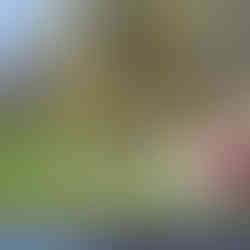And on Our Farm there were some BEEs
- Sarah Potenza | Farm Manager
- May 9, 2018
- 2 min read
Updated: Aug 16, 2022
Another BEEutiful sunny day with a high of 65° and the sound of bzzz, bzzz, bzzz. Each bloom we bring in honey bee colonies to help pollinate our apple and pear trees. Three generations ago this was not necessary, but the number of pollinator bugs has decreased in the area. NY State department of agriculture encourages everyone to plant pollinator gardens to help feed our pollinator friends. We have converted over 10 acres of our orchards to pollinator fields filled with local wildflowers. We also have honey bee hives on the side of our house and barn that are over 30 years old.
The hives are delivered at night while the bees and usually the farmers are sleeping. They come in on a flatbed and we use our equipment to place them in strategic places around the orchard. It’s important to make sure each group of bees has plenty of trees to feast on.
Apple and pear trees must be cross pollinated.That means that pollen from one variety of apples like Honey Crisp must be carried to the flowers of another variety like McIntosh. When we plant our apple trees we make sure to alternate varieties every couple of rows.

Bloom on each tree only lasts a couple of days in the best weather conditions. Rain, wind, heat, and frost can all reduce our pollination time frame. The number of seeds and the size of the apple is determined by how well our bee friends can pollinate.

To give the bees a helping hand we sometimes will deliver pollen to their hives that they will carry to our apple blossoms. This is a dangerous process and proper equipment is essential. Bee keepers suit, mask, gloves, and small smoker. Best to work in pairs to make sure there are no bees trying to hitch a ride before taking safety equipment off.
We fill the pollen traps with different types of pollen depending on which varieties we are closest to. For example we use empire pollen to pollinate Macs.
The boxes are then brought to the hives and clipped on near the bees entrance/exit. BEE Careful. It’s best to do this late morning when the bees are most active and still have plenty of hours of pollination left.
It’s important to observe the placement of the pollen trap to make sure that the bees are getting the pollen stuck to them on their way out. Sometimes the trap has to be readjusted.
Watching the bees take the pollen to the apple flowers is a magical moment in nature.

Although bloom is usually in the beginning of May, you can still come see pollinators in action in the fall. You will find them hopping from flower to flower in our BEEautiful pollinator gardens at Hurds Family Farm. It’s a great place for photo ops. Weather pending they should be in bloom through mid October.

The above photo was captured by Megan Hurd. We would love to see your photos! Share with us here or facebook, instagram or twitter.























